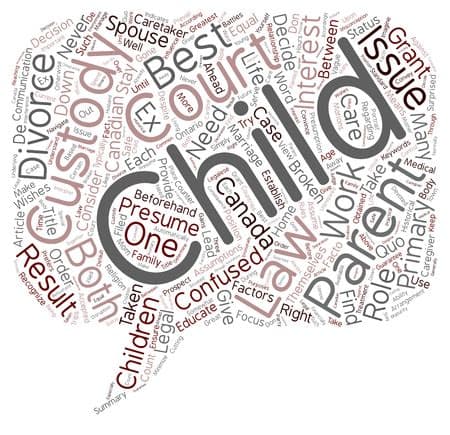More and more judges are awarding “50/50” parenting time in divorce and custody cases. So, what does a 50/50 parenting times schedule look like?
There are three major “50/50” parenting time schedules. The following are examples of how the month would be divided between the parties:
1. WEEK ON WEEK OFF

In a week on/week off parenting time schedule, the parties exchange the child(ren) one time per week. This can be on any day the parties agree to. But often the exchange day will be before the weekend starts such as Friday, or after the weekend ends such as Sunday. This schedule stays consistent throughout the year.
2. TWO-TWO-THREE
In a 2/2/3 parenting time schedule, the parties follow a rotation as shown in this calendar:

3. TWO-TWO-FIVE
In a 2/2/5 parenting time schedule, the parties follow a rotation as shown in this calendar:

WHAT IS THE DIFFERENCE BETWEEN THE TWO-TWO-THREE AND THE TWO-TWO-FIVE PARENTING TIME SCHEDULE?
The difference between a 2/2/3 and a 2/2/5 parenting time schedule is that in a 2/2/3 schedule the parties rotate the Monday/Tuesday and Wednesday/Thursday parenting time. In a 2/2/5 schedule one party will always exercise parenting time on Monday and Tuesday, with the other party always exercising parenting time on Wednesday and Thursday. The parties would then rotate Friday, Saturday, and Sunday.
WHAT 50/50 SCHEDULE IS BEST – THE PROS AND CONS?
WEEK ON/WEEK OFF SCHEDULE:
Pros: This schedule works best for older children, as it can be difficult for younger children to go seven days between visits. This schedule provides the best consistency for the children and the parties. Additionally, this schedule also reduces the number of exchanges per month between the parties, making this ideal for high conflict cases.
Cons: Not ideal for very young children, as children go seven days between visits with the other parent.
TWO-TWO-THREE SCHEDULE:
Pros: This schedule works best for younger children, as it reduces the length of time between visits (only go three days between visits with each parent). Younger children require consistent visits with each parent, not necessarily longer visits with each parent.
Cons: Because this schedule requires the parties to continually rotate Monday/Tuesday and Wednesday/Thursday between the parties throughout the month, it can provide less stability for the children and can be confusing for the parties. This schedule also drastically increases the number of exchanges per month that must take place between the parties, making it difficult for high conflict cases.
TWO-TWO-FIVE SCHEDULE:
Pros: This schedule can work just as well as the 2/2/5 for younger children (if five days between visits is not an issue with the parents and children). It provides more consistency for both the children and the parents than the two-two-three schedule, as the same parent will always exercise parenting time on Monday/Tuesday or Wednesday/Thursday throughout the month. It can make long-term planning much easier for the parents.
Cons: This schedule drastically increases the number of exchanges per month that must take place between the parties, making it difficult for high conflict cases.
CONTACT SCHMITT LAW, PPLC FOR LEGAL ADVICE ON CUSTODY
Custody is a sensitive topic in divorce cases. Child custody mediation will put your child first and set you up for a healthy co-parenting relationship. With an experienced attorney and mediator like Laurie Schmitt, you will be able to navigate your new family dynamic with clear understanding and communication. Looking for a professional and experienced family law attorney, contact us online or give us a call at (616) 608-4634. At Schmitt Law, PLLC our commitment is to you!



